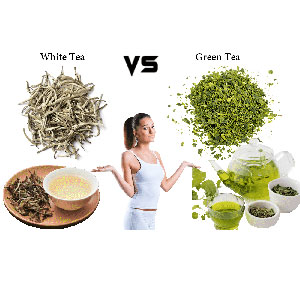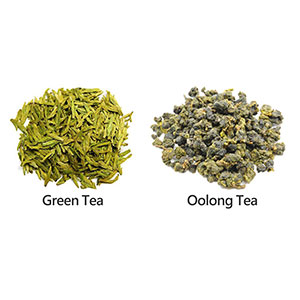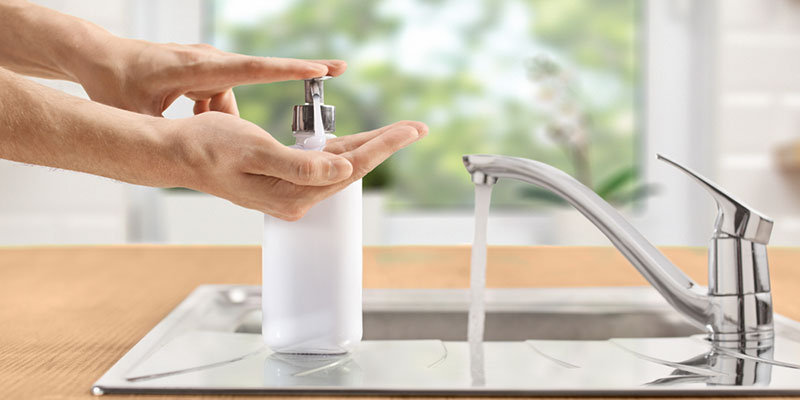Can I Mix Green Tea With Normal Tea?

Green Tea
It’s not a new concept to mix two or more teas together. Even it is a great idea to create and explore a lot of new flavors and aromas. But the problem arises when you cannot mix a random tea with another because there are limitations. So, if your question is, ‘can I mix green tea with normal tea?’ then the one-word answer is yes.
In this article, we are going to explain when, how, and what type of tea you can mix together. Also, we’ve discussed if there are any adverse health effects of mixing tea or not.
To know all of it, stay with us.
Can I Mix Green Tea With Normal Tea?
The answer is YES! You can even mix 2, 3, or even more teas together. In this way, you’ll get a variety of new and different notes, aromas, and flavors.
But hey, what does exactly normal tea mean? Well, normal tea refers to black tea, in general. Because black tea is the most common type of tea around the world.
In this article, we will talk about mixing green tea with black tea in the first place. However, we will talk about mixing green tea with any other types of teas as well.
Mixture 1: Green Tea and Black Tea
Both black tea and green tea are the same product of the leaves, buds, or stem of the same shrub named Camellia sinensis. Both of them are from a similar plant, but the difference lies in their processing.
 Tea leaves come with certain enzymes that let happen a chemical reaction called oxidization. And, oxidization let the green tea leaves turn into deep black color.
Tea leaves come with certain enzymes that let happen a chemical reaction called oxidization. And, oxidization let the green tea leaves turn into deep black color.
So, black tea is heated until the oxidization or fermentation process ends whereas green tea is heated for a so short time that even the oxidization process doesn’t begin, it’s heated (roasted or steamed) immediately after harvesting.
This is why some purists say that mixing black tea and green tea is not a good idea. They believe that green tea comes with a nutty, grassy flavor whereas black tea is darker, bolder, more robust in taste, and even more acidic.
To sum up, some purists say that black tea and green tea’s flavors do not go with each other well. So, health-wise, it’s not necessarily a bad idea to mix teas together. But there can be unwanted results of it.
However, there is a huge variety of green tea and black tea having largely different flavor profiles, some of them may not complement each other well but others do mix well.
Mixing stronger types of green teas with weaker black teas is a good idea as they can be more balanced. For example, a roasted green tea such as Houjicha can go well with a milder tea such as Darjeeling.
Also, both Houjicha and Darjeeling tea requires almost the same brewing temperature, meaning you can brew them together easily.
To make your path easier, here’s how to mix green and black teas:
You should brew any green tea at a lower temperature compared to a back tea. What you can do is brew the two different teas separately, then mix them afterward.
Or, firstly, use boiling water to brew the black tea then transfer the leaves to a tea infuser and use the already brewed black tea to brew the green tea leaves. Do it when the temperature is cooled.
Mixture 2: White Tea and Green Tea
 White tea and green tea can also go well, even better since their brewing temperatures are close enough.
White tea and green tea can also go well, even better since their brewing temperatures are close enough.
The recommended brewing temperatures for green tea and white tea are 170-180℉ and 150-170℉ respectively.
Just as the black tea, here also some types of white and green tea will go together but some will not.
You can try a milder green tea (e.g Dragon-well) with a flavorful white tea (e.g White peony).
Mixture 3: Green Tea and Oolong Tea
 Well, this option is probably the best one, this is about blending two true teas together since both of them are quite similar in flavor.
Well, this option is probably the best one, this is about blending two true teas together since both of them are quite similar in flavor.
Moreover, their brewing temperatures are close enough as well.
As we said before, recommended brewing temperature of maximum green teas is between 170℉ to 180℉. And, for oolong teas, this temperature is between 194℉ and 205℉.
What it means is, you can brew these two teas together.
Can You Mix Mint Tea and Green Tea?
Yes, you can. Mixing spearmint tea and green tea is the best option so far. Sometimes, people want to mix peppermint with green tea which is not a good idea since peppermint is a lot stronger type of tea.
Mixing too much stronger tea with a milder one can end up tasting unpleasant because the stronger one overpowers the whole cup of tea.
What if You Mix Green Tea and Chamomile Tea?
Moving away from the teas come from the same plant and blending them even a better idea to create unique blends. Yes, green tea and chamomile tea complement each other well.
Chamomile tea will bring a sharp herbal flavor as well as a full-boiled taste to your nutty and vegetal green tea world. It also mix the health benefits of those two teas (herbal and green tea).
Both green tea and chamomile tea are flu fighters. So, if you combine them, you’ll get an effective prevention when it’s flu or cold season or just simply to get rid of the symptoms after you’ve already been sicked.
Other Flavors You can Mix with Green Tea
Because of the base flavor of green tea, you can blend it with various herbs, fruits, spices, and so on. Every flavor adds an individual taste to your drink.
If you add any of these flavors, it even will save the expired tea as it never spoils. Also, tea leaves last a long period as well. Let’s get to know some flavors you can mix with your green tea.
Milk
This is one of the frequently asked questions- can I add milk to my green tea? Well, yes, you can if you want. Some people hate adding milk to their tea, hate it more when it’s green tea.
However, it can be a wonderful match if you love adding milk to your tea. Although you can add milk to any type of green tea, using matcha green tea, in this case, will make the best pair so far.
Because the smooth and foamy creaminess of milk will go better with matcha’s froth texture and vegetal green tea flavors.
Fruits
And, here is one of the best ideas to bring sweetness to your cup of green tea is to add fresh fruit flavor. No matter if you’re making an iced green tea (fruit-flavored) or a warm green tea, you need to use the actual fresh fruit in it.
To do so, slightly mash, crash, or chop berries like strawberries, blackberries, raspberries, or blackberries and make a perfect cup of fruit-infused green tea in no time.
And, if you want to add a more citrus flavor to it, simply squeeze a lemon or an orange into your green tea or you can put a slice directly into your glass of brewed green tea.
To add a sweet flavor, you can go for mango, watermelon cubes, peach, or cantaloupe instead. You can either serve it right after making the tea, enjoy the hot seeps or serve it with ice after cooling the tea down.
Sweeteners
Well, if you just don’t want the grassy flavor of green tea yet want to enjoy the benefits of green tea, you can use sweeteners to make the tea taste better. The best option is to use natural sweeteners like honey.
Roasted Rice
This one may seem unfamiliar to you if you’ve never been to Japan or never heard of Genmaicha. Genmicha tea is also known as popcorn tea that is a combination of green tea and roasted brown rice.
Although everyone will not like this flavor, some people really love it.
Super-Powers of Green Tea
In the west, green tea is not as popular as black tea. However, it’s packed with a lot of health benefits you don’t want to miss.
Here you go with some primary benefits of green tea that are proven by researchers and health professionals.
- Helps to lower cholesterol: By decreasing the bad cholesterol from your body, green tea lowers the risk of having any cardiovascular disease.
- Improves blood circulation: Green tea improves the blood circulation. Consequently, it reduces the risks of high blood pressure or congestive heart failure type of heart-related issues.
- Rich in antioxidants: Green tea is rich in natural antioxidants such as catechins that protect against cell damage.
- Prevents type-2 diabetes: Research shows that people who drink green tea regularly are less likely to get attacked by type-2 diabetes.
Are There any Adverse Health Effects that Results in Mixing Teas?
There’s no such record of any adverse health effects that may have resulted in mixing teas together. But one issue people may face sometimes is the caffeine content in teas.
For instance, if you mix black tea with oolong tea, matcha tea, or mate tea, you’ll end up having much caffeine in your cup of tea.
Now, the problem is, consuming an excessive amount of caffeine may cause you to have difficulty with anxiety, sleeping, nervousness, agitation, jitteriness, irritability, and more.
People who should never consume high caffeine are:
- Pregnant people
- Kids and even teenagers
- People who suffer from arrhythmia
- People with anxiety problem or sleeping difficulty
However, we can never deny the health benefits of tea. But you need to drink this beverage in moderation. The unwanted things can happen when you consume a large amount of tea daily. It’s totally unsafe to drink more than 5 cups of black tea in a day.
Frequently Asked Questions
Conclusion
Mixing teas together and exploring a variety of new flavors is not a bad idea. Hopefully, at the end of the article, ‘can I mix green tea with normal tea?’ is not a big question for you anymore.
Try to drink tea in moderation. And, choose the right type of tea to mix with another right type.
Enjoy your tea time the most!



